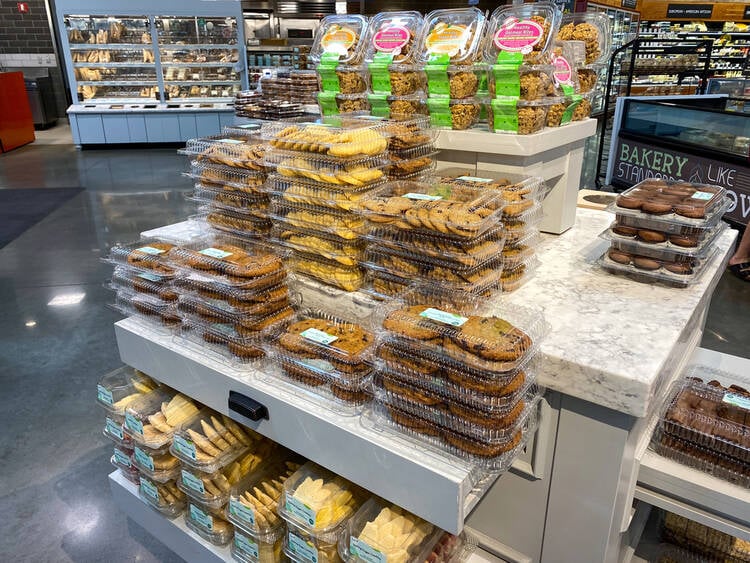
One of the most effective ways to increase sales and maximize profits in any business is to price your products correctly.
Setting the right price can make all the difference between attracting loyal customers and struggling to cover your costs.
The truth is, with the right pricing strategy, you not only ensure a healthy profit margin but also maintain competitive appeal in a crowded market.
Pricing too low might bring in customers initially, but it can hurt your bottom line and undervalue your product.
On the other hand, if you price too low, you risk losing potential buyers to competitors.
In this article, we will explore some practical tips to help you price your cookies for profit without driving customers away.
Whether you are selling homemade treats at a local market or running an online bakery, mastering pricing is key to building a sustainable and thriving cookie business.
15 Tips to Price Your Cookies for Profit Without Losing Customers
-
Calculate Your Costs Accurately
Calculating your costs accurately is the foundation of pricing your cookies for profit.
Start by adding up the cost of all ingredients used in each batch—flour, sugar, butter, chocolate chips, and any special add-ins.
Don’t forget packaging materials like boxes, bags, or labels, which can add up quickly, especially for individually wrapped cookies or gift sets.
Next, factor in labor costs by estimating the time spent baking, mixing, and packaging, then assign an hourly wage to that time.
Overhead expenses such as electricity, rent, equipment maintenance, and marketing should also be included. Adding all these costs together will give you the true cost per cookie.
-
Factor in Labor Time
Factoring in labor time is crucial when pricing your cookies. Whether you’re baking and packaging yourself or have employees helping, it’s important to assign a fair wage for the hours spent.
Calculate how long it takes to prepare, bake, cool, and package a batch of cookies, then multiply that by an appropriate hourly rate.
Fair labor costs not only keep your business sustainable but also motivate quality work and help you plan for growth.
-
Research Your Market
Researching your market is an essential step in setting the right price for your cookies.
Take the time to check out what competitors in your area or niche are charging.
Visit local bakeries, farmers’ markets, or online shops to get a clear picture of the going rates for similar products.
Understanding competitors’ pricing helps you position your cookies competitively, whether you want to offer a premium product or attract budget-conscious customers.
This insight guides you to price your cookies fairly while standing out in the marketplace.
-
Know Your Target Customer
Knowing your target customer is key to pricing your cookies effectively. Understand who buys your cookies—are they looking for a gourmet treat, a quick snack, or an affordable everyday option?
Customers willing to pay more often expect higher quality ingredients or convenient packaging, while budget-conscious buyers prioritize value.
By aligning your pricing with what your customers want and are willing to pay, you create a better chance of satisfying them and encouraging repeat purchases.
-
Consider Portion Size and Weight
Consider portion size and weight when pricing your cookies, as these factors directly affect customer perception of value.
Larger cookies or those made with gourmet ingredients can command higher prices because customers see them as more indulgent or special.
A hefty, flavorful cookie justifies a premium price compared to a small, basic one.
-
Include Packaging Costs
Packaging plays a vital role in your cookie business—it protects your product, enhances presentation, and influences buying decisions.
Whether it’s a simple Kraft bag or a custom-designed gift box, every packaging choice comes with a cost.
These expenses should be included when calculating your final cookie price.
Nice packaging adds perceived value and can attract more customers, especially for special occasions or gift orders.
However, to maintain profitability, ensure these costs are factored into your pricing strategy so you’re not absorbing them out of your profits.
-
Add a Profit Margin
Adding a profit margin ensures your cookie business remains financially healthy.
After covering all expenses—ingredients, packaging, labor, and overhead—you need to apply a markup to generate profit.
A common rule of thumb is aiming for at least a 30% profit margin, but this can vary depending on your business model and goals.
Profit margins allow you to reinvest in your business, manage unexpected costs, and grow sustainably.
Without a clear markup, you risk underpricing your cookies and limiting your potential to scale or improve your offerings.
-
Adjust Prices for Wholesale or Bulk Orders
When offering wholesale or bulk orders, it’s common to provide discounts, but it’s crucial to ensure those deals still leave room for profit.
Calculate your cost per unit carefully, then determine a discounted price that accommodates larger volumes without undercutting your bottom line.
Bulk pricing can help you secure long-term or repeat business, especially with retailers, event planners, or corporate clients.
Just be sure your discounted rates still cover all production costs and include a healthy profit margin to keep your operations sustainable.
-
Use Psychological Pricing
Psychological pricing is a subtle yet powerful strategy. Instead of rounding to whole numbers, pricing your cookies at $4.99 instead of $5.00 can make them seem more affordable to customers.
This small difference often triggers a positive buying response because it feels like a better deal.
When used correctly, psychological pricing can position your cookies competitively, attract attention, and create the impression of value—all while maintaining your bottom line.
-
Test Different Prices
Testing different prices allows you to find the sweet spot where profit and sales volume align.
Start by making small adjustments to your cookie prices and monitor customer response.
A minor increase might not deter buyers, but could significantly boost your revenue.
Track how each price change affects sales, feedback, and customer behavior.
Over time, this data helps you understand what your market is willing to pay and lets you fine-tune your pricing strategy for maximum profitability without sacrificing customer loyalty.
-
Offer Seasonal or Limited-Time Pricing
Offering seasonal or limited-time pricing is a great way to boost sales and increase perceived value.
During holidays or special events—like Valentine’s Day, Christmas, or local festivals—you can introduce themed cookies at a premium price.
Customers are often willing to pay more for festive, limited-edition treats. Just make sure the quality and presentation match the higher price point.
Seasonal pricing keeps your menu fresh and your profits growing throughout the year.
-
Bundle Products
Bundling products is a smart way to increase average order value and offer customers more for their money.
Create value packs, like a dozen assorted cookies or themed gift boxes, that cost less per item than buying individually.
This encourages customers to spend more while still feeling like they’re getting a deal.
Cookie bundles are perfect for gifts, parties, or families and can help you move more inventory quickly.
Just ensure your pricing still covers costs and includes a profit margin for sustainability.
-
Be Transparent About Ingredients
Transparency about your ingredients builds trust and supports higher pricing.
If you use high-quality, organic, or locally sourced ingredients, don’t keep it a secret—highlight these details on your packaging, website, or menu.
Customers are more willing to pay extra when they understand the value behind your product.
Whether it’s real butter, fair-trade chocolate, or gluten-free flour, being upfront about what goes into your cookies can validate your pricing and attract loyal, quality-conscious buyers.
-
Factor in Delivery or Shipping Costs
If your cookie business offers delivery or shipping, it’s important to factor those expenses into your pricing. Costs like packaging for transit, courier fees, and fuel can quickly add up.
You can include a flat rate or build delivery costs into the product price, especially for local deliveries.
Carefully tracking these costs ensures your prices remain profitable while still providing convenience to customers who want cookies delivered to their door.
-
Review and Update Regularly
Regularly reviewing your pricing is essential for long-term profitability. Ingredient costs, packaging expenses, and market trends can shift over time, affecting your bottom line.
By assessing your prices at least quarterly, you can adjust accordingly to stay competitive and ensure continued profit.
Don’t be afraid to raise prices when necessary, especially if your costs have increased. Communicate changes clearly to customers, emphasizing quality and value.
Staying proactive with pricing helps your cookie business adapt to economic shifts and grow sustainably.
